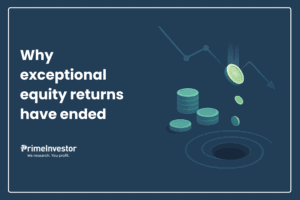If there’s one type of fund that frequently appears in new fund launches and your questions to us, it’s the Income Plus Arbitrage fund. These fund-of-funds promise debt-like returns combined with lower taxation, thanks to the blend of arbitrage funds and debt funds in their portfolios.
But should you consider them? Let’s investigate.

Taxation – the origin
Income plus arbitrage funds are classified under the fund-of-funds category. They invest in both debt funds (income) and arbitrage funds. They are expected to give returns comparable to debt funds and qualify for long term taxation of 12.5% as per current tax rules.
It is the tax changes in debt funds that gave birth to this new debt-plus-arbitrage category. Let’s trace this history.
The tax change: Up until 2023, short-term capital gains from debt funds were taxed at your slab rate, and long-term capital gains enjoyed favourable taxation: 20% with indexation benefits. A holding period of 3 years was used to determine if gains were short-term or long-term. This made them very tax-efficient compared to fixed deposits and a great debt investment vehicle.
However, this favourable treatment ended in 2023. From April 1, 2023, all capital gains from debt mutual funds regardless of holding period are taxed at the investor’s slab rate. This removed the distinction between short- and long-term gains and abolished the benefit of cost indexation. (Note: this tax rule applies for fresh investments in debt funds made after April 1, 2023)
In FY-24, tax rules changed again, especially with regard to fund-of-funds. As you may know, a fund-of-fund invests in different funds. From FY24, the tax treatment of FoFs depends on the underlying asset allocation. FoFs that invest at least 65% in debt (either directly or via debt mutual funds) continue to get classified under debt taxation. FoFs with less than 65% allocation to both debt and equity now have the following taxation:
- Long-term capital gains (after 2 years) taxed at 12.5% without indexation
- Short-term gains are taxed at the investor’s slab rate.
The impact: With the 2023 tax rule, debt funds suddenly went from a great tax-efficient option into a tax-heavy option. This shift sent investors seeking favourable tax treatment to arbitrage funds. Arbitrage funds offer debt-like (comparable volatility) behaviour and return, since their entire equity exposure is hedged through derivatives, but are taxed as equity.
However, arbitrage fund returns are typically similar to liquid funds (and sometimes lower) and are lower than other debt funds as well. For higher returns, one would then have to turn to equity savings funds, which hedge a good part (but not all) of their equity portfolio. Equity savings funds offer equity taxation, higher returns than debt, and lower volatility than other hybrid funds. But they are not in the same risk category as debt funds, owing to their unhedged equity and, during periods of steep market correction, cannot be expected to always outperform debt funds.
This opened up an opportunity for AMCs to blend arbitrage and debt in the structure of a fund-of-fund. And so by late 2024, AMCs began launching income plus arbitrage fund-of-funds (also called debt plus arbitrage FoFs). These funds invest:
- Less than 65% in debt mutual funds from any category – corporate bond, short duration, gilt, banking & PSU etc
- At least 35% in arbitrage funds.
The tax advantage: Income plus arbitrage FoFs claim the following benefits:
- Lower volatility: Since these funds avoid unhedged equity exposure, they are expected to be far less volatile than equity savings funds.
- Higher returns: Having up to 65% in debt improves return potential over pure arbitrage funds.
- Crucially, they qualify for favourable long-term taxation of 12.5% after 2 years
How these funds are constructed
Although the concept of these funds are new, some may appear to have a long track record. That’s because several AMCs have repurposed existing FoFs by modifying their fundamental attributes to create income plus arbitrage funds. Any history we have for these funds is relevant only from the point of the change in mandate.
So far, the funds launched follow an actively managed strategy. They invest slightly more than 35% in arbitrage funds to ensure that the debt allocation remains below 65%, preserving tax efficiency.
On the debt side, most funds currently invest in corporate bond funds and banking & PSU debt funds, with some exposure to other debt fund categories. This allocation may well change over time based on the fund manager’s view of which debt categories are expected to perform better. At this point, corporate bond funds offer a good mix of higher-interest accrual and some capital appreciation as yields dip.
As of April 2025, the average portfolio of income plus arbitrage funds is structured as follows:
Of course, there are differences between funds. While the income plus arbitrage FoFs from Bandhan, HDFC, and ICICI Pru invest almost all of their debt allocation in corporate bond funds, DSP Income Plus Arbitrage FoF invests the majority of its debt portion in banking & PSU debt funds. Others, such as those from Axis, Aditya Birla Sun Life, and HSBC maintain a more diversified allocation across multiple debt categories.
What returns can you expect?
Let’s begin with what NOT to consider: the past performance of income plus arbitrage funds that you see currently. As mentioned above, all existing funds with long track records have undergone a change in fundamental attributes, making their past performance data irrelevant.
Below is a list of current Debt Plus Arbitrage funds, along with their former names and the month they transitioned to the new structure:
As you can see, we have less than a few months’ data to assess any performance. Therefore, DO NOT go by the 1/3/5 year returns or any other returns you see for these funds.
Step 1: Estimating average debt returns
It is important to understand how these funds can potentially deliver. This is because shifting out of debt and into these FoFs needs to be return-accretive, on a post tax basis. Since we can’t rely on historical performance, we have used the income-plus-arbitrage portfolio structure and historical returns of debt funds to arrive at an estimate of how these funds perform against pure debt funds.
Then, to analyze the usefulness of income plus arbitrage funds in a portfolio, we considered two scenarios:
- One, for those with a short-term investment horizon looking for a low-volatile fund that offers better returns and favourable tax. For this, we took 2-year returns (since 2 year holding is required for the favourable tax rate of 12.5%).
- Two, for those who are looking for a tax-efficient route to debt funds in their long-term portfolios. For this, we took 3-year returns.
We took the rolling returns for the above timeframes from 2018 to date for major debt categories and arbitrage funds (i.e., the period since the 2017 recategorization so debt category returns are more relevant). The table below shows the average of these rolling returns.
Step 2: Estimating potential income plus arbitrage FoF returns
As a Fund of Funds, these schemes carry their own expense ratio. Based on April 2025 portfolios, most of these funds charge very low fees—all but one have an expense ratio of 0.1% or lower. To assess the potential performance of income plus arbitrage funds against pure debt funds, we assumed the following allocation:
- 16% each to four debt categories – banking & PSU, corporate bond, gilt, short duration
- 36% to arbitrage funds
- and a 0.1% FoF expense ratio
Based on this, the estimated pre-tax returns of income plus arbitrage FoFs work out to:
- Rolling 2-year return: 6.47%
- Rolling 3-year return: 6.06%
If you compare these returns against the debt fund average above, you will see that they deliver below any debt category in both 2 year and 3 year periods. This is not too surprising, as a third of the FoF portfolio is locked in low-returning arbitrage.
The real advantage of these funds lies in their post-tax returns. The tables below show how they look across tax slabs for the same portfolio structure. We have highlighted the debt category that is most recommended and suitable for the 2 & 3 year holding periods for your easier comparison.
Observations
The returns above suggest that income plus arbitrage funds can generate better post tax returns for those in the tax brackets of 25% and 30% in the short and long term. For those in lower tax brackets, pure debt funds work better on a post-tax basis.
However, before you ditch debt for these FoFs, we recommend the income plus arbitrage FoFs for only those in the 25%-30% tax bracket who have a time horizon of 2-3 years only. For those in the 25% tax bracket, note that the post-tax return differential is unlikely to be very significant.
The 2-year period offers some extent of certainty in tax rates and more predictability in the debt strategy of the funds. The return differential in the 2-year period between short duration funds and income plus arbitrage funds is also quite significant for those in the 30% tax bracket. The rolling return analysis also indicates that income plus arbitrage funds would beat short duration funds (post tax) all the time.
The reasons behind us not recommending income plus arbitrage funds for the long term – especially given the extreme newness of the category – are as follows:
Unclear long-term advantage: The advantage income plus arbitrage offers is not very clear in long-term periods. Longer-term debt fund categories deliver much higher returns than income plus arbitrage, which puts a bigger dent in the tax advantage. A closer look at return distribution shows that there are times when pure gilt funds do better than income plus arbitrage funds, even on a post tax basis.
If we take the average 5 year rolling return over the past 8-year period, gilt and corporate bond fund returns are much higher than the 3 year returns. This means that the likelihood of these debt funds beating income plus arbitrage is even higher.
Even if you consider a scenario where you will need to redeem debt funds as part of rebalancing your long term portfolio, it is not a given that income plus arbitrage will be an advantage. Imagine these funds giving a pre tax return of 6.06% and a corporate bond fund giving 6.66% (as per 3 year rolling return analysis we saw earlier).
Now let’s say you redeem about a third of debt assets as part of rebalancing after 5 years and the current tax rates apply. Post tax, you will still have a higher value remaining in the debt fund than in the income plus arbitrage fund. The illustration below shows how this works out for Rs.100 invested:
Essentially, it entirely boils down to the returns of each fund – and this is where the next uncertainty with income plus arbitrage crops up.
Risks from FoF composition: The risk in income plus arbitrage comes from the underlying debt strategy. The composition of debt will be at the discretion of the fund manager.
For example, if we were to change the income plus arbitrage composition in our example above, to say, comprising only short duration and banking & PSU funds, the 3-year post-tax return differential reduces by about 7 basis points over corporate bond or gilt funds. If we were to change the FoF composition to only corporate bond and short duration, the differential reduces only marginally.
Therefore, the FoF’s composition plays a big role in its returns – and you have no control over where the fund invests. Any ill-timed call on interest rate movements or type of debt fund chosen could negatively impact returns. The FoFs offer less transparency in portfolio positioning, making it difficult to predict its risks.
Another risk is the performance of the underlying funds the fund-of-fund invests in. Poor performance of the debt fund the FoF invests in can remove any tax advantage, especially given that the post-tax return differential is not very significant.
These factors make it important for the fund to prove its ability to make the category and fund calls right before considering those for long-term investments. At this time, there is just no information to make a judgement.
This apart, any potential increase in expense ratio is also a risk that may tilt the equation, especially already we see the advantage of post tax returns, even for those in the 30% slab is in the range of 0.4% to 0.5% only.
No predictability over tax rates: Future post tax returns could change materially over the long term due to change in taxation or change in one’s personal financial situation. For example, one may see a slight advantage now based on 12.5% taxation on the income plus arbitrage fund and 30% on the debt fund. But if the last few years is anything to go by, it is that taxation is always liable to change.
So if the 12.5% rate were to change to 15%, it can throw off any calculation. Or if at the time of redemption, you wind up in a lower tax bracket, the estimated advantage may vanish. Or if the tax slabs change (as it did in the Budget 2025, making incomes of Rs 12 lakh and below tax-free), any calculation you do today will be irrelevant.
Conclusion
To summarize, our preliminary analysis suggests that income plus arbitrage FoFs may deliver higher post-tax returns than debt funds for investors in the 25% and 30% tax slab who wish to invest for a 2-3 year period and avoid equity market volatility. While equity savings funds have the potential to generate higher returns than debt plus arbitrage funds, they carry equity market risk and are not debt fund substitutes.
At this point, there is just not enough information to estimate how good this new category will turn out to be over the long term. Going by historical debt fund returns, the income plus arbitrage FoFs are not an out-and-out winner for us to make an unequivocal recommendation.
There is always strong demand for tax-saving products, and AMCs do their best to meet that need. While there’s no harm in considering tax efficiency once you’ve shortlisted suitable options, tax-saving should not be the primary objective when selecting an investment.




26 thoughts on “Prime Review: Should you invest in Income Plus Arbitrage funds?”
Does Balanced Advantage fund serves the purpose better?
Hello,
Balanced Advantage Funds are not comparable with debt funds in terms of risk profile. They hold more unhedged equity than Equity Savings Funds. As of now, the funds with no exposure to unhedged equity are Arbitrage Funds and Income + Arbitrage Funds (and of course, pure debt funds).
Regards
Hi,
Thanks for detailed analysis.
I have two queries
1. In ‘sample rebalancing calculation’, you have taken redemprtion as percentage of parent fund -30%. However it would be more prudent to do this calculation, with a fixed amount and then check post tax returns. Lets say redemption is Rs 40.26 in both cases, then what would be the post tax returns in both cases. The reason being that redemption requirement may not only be for Rebalancing but it could also be for meeting cash flow (planned or emergent) requirement.
2. In tax categories, for calculation, you may also include categories with income more than 50 lakh and 1 cr, as there is surcharge applicable for these income brackets and returns could be very different.
Thanks
Hello,
Regarding the queries:
1. Understood your point. In the sample calculation, the Debt fund ended up with higher balance despite higher redemption. If we were to withdraw 40.26 only, the debt fund could have ended up with more balance (94.45)
2. Point noted. We will add higher slabs in future calculations.
Regards
Thanks. However my query for redemption was slightly different. I will rephrase it – If I need Rs 40.26 after tax, from which fund would I have to redeem lesser amount to meet this requirement.
Hello,
Thanks for clarifying. In the case you’ve mentioned, a smaller amount would have been redeemed from the Income + Arbitrage fund due to the lower tax rate.
When we look at how much needs to be redeemed to receive a certain post-tax amount, it becomes an analysis of an investment over a fixed duration — as we’re focusing only on the redemption value, not the remaining investment.
The remaining amount is more exposed to uncertainties, which matter more in the long term.
Regards
thanks
For some reason, Edelweiss Multi Asset Allocation Fund which was launched in June 2023 for exactly this tax arbitrage has not caught much attention. It has 100% hedged positions in equity and gold/silver investments.
Unlike the other FoFs listed here which have changed their fundamental attributes, Edelweiss MAAF is strategic fund using the multi-asset mandate (not a FoF) and it’s performance over 2 years can be compared to debt/arbitrage funds.
I have been invested since Jul 2023 and it has performed exactly as expected, low volatility, debt like returns!
Thanks for the article and insights. I had invested in Kotak Arbitrage Fund few years back for a short term requirement. That requirement did not arise and in between all these tax changes for debt / FOF funds happened. Now I am a bit confused whether to continue with this fund or switch, as I will not need these funds in the near future. Will be thankful for your views (I am in the 30% tax bracket).
Thanks
Hello Sir,
You can try some scenarios where you switch/do not switch and does final redemption is different points in future (e.g. 2 years/3 years etc)
The spreadsheet provided in the below article will help you do such calculations.
You may enter expected returns of the new fund higher than the expected return of the current fund, and applicable capital gain tax rate as 12.5%, and 30% for current and future.
https://primeinvestor.in/reports/switching-between-funds/
Regards
Thank you, very well explained.
Thank you, Sir!
Hi Team PI,
You need to make one correction pertaining to DSP Income Plus Arbitrage Fund. For this fund the TER of 0.43% is inclusive of TER of underlying debt and arbitrage funds which is not the case with other funds. (In principle, DSP MF has decided to include TER of underlying funds of FoFs for better transparency.)
With zero tax liability upto INR 12 lakhs, debt funds are clear winner for particular tax group and not much advantage for higher slab too.
Regards.
Jatin Mehta
Hello Sir,
Thank you for bringing this to our attention. You are right! We will make the correction.
Regards
How about Equity savings fund? They have a longer history but of course more volatile due to 65% equity though they usually do 35% or more in arbitrage
//Equity savings funds offer equity taxation, higher returns than debt, and lower volatility than other hybrid funds. But they are not in the same risk category as debt funds, owing to their unhedged equity and, during periods of steep market correction, cannot be expected to always outperform debt funds//
Regards
Thanks for the clarification. Can Arbitrage really deliver returns in the longer run? I believe most of these funds including equity savings, pure arbitrage funds are more popular post Covid When I looked at past data in 2012 times I did see Equity savings delivering mid to low single digit returns. Lack of experience with bear markets post covid clouds our judgement is what I feel.
Hello,
Arbitrage funds predominantly generate returns from the price arbitrage between cash and future markets. You can read more about our view on arbitrage fund returns in this article: https://primeinvestor.in/reports/why-arbitrage-fund-returns-could-shrink/
One thing we have to take into consideration is that the standardization of mutual funds categories took place with effect from 2018-Apr-1. So we can’t be sure that performance before this point can be assessed based on their current mandates.
Regards
Hello Bipin,
As mentioned in the article you have linked, some of the factors were under discussion and not finalized then.
Could you please do a more data-driven comparative exercise based on actual returns as it says at the end?
That will provide a more clear idea to decide the appropriate fund type between arbitrage and short term debt.
Also, a fund manager doesn’t have to bother about income tax as a retail investor has to, right? So, arbitrage has to perform better ‘pre-tax’ than short term debt for a fund to continue with the category beyond what is required for the equity tag.
Nice article and thanks for covering in detail.
For the tax calculation, for a person earning above 2C taxable income pays
– 30% Tax + 25% Surcharge + 4% Cess = 39% tax on Pure debt fund
– 12.5% Tax + 15% Surcharge + 4 % Cess = 14.95% on This category after 2 years.
This is significant tax saving and much better value proposition compared to pure debt fund. Please correct if my calculation is correct.
Yes …rightly put for higher taxable income. I was looking for the same.
How about Parag Parikh dynamic asset allocation fund. Is there any advantage of PPDAAF for 30% bracket people ?
Hello Sir,
Parag Parikh Dynamic Asset Allocation Fund has an allocation to unhedged equity. Like equity savings funds, it can generate higher returns than pure debt funds and also qualifies for lower taxation under current rules. However, these funds are not a replacement for debt funds, as they fall under a different risk profile.
Regards
Thank you Sir.
PPFAS DAA looks like an income plus arbitrage fund with some exposure to equity